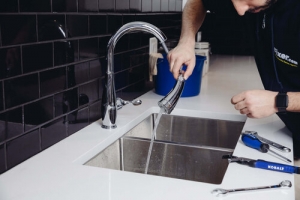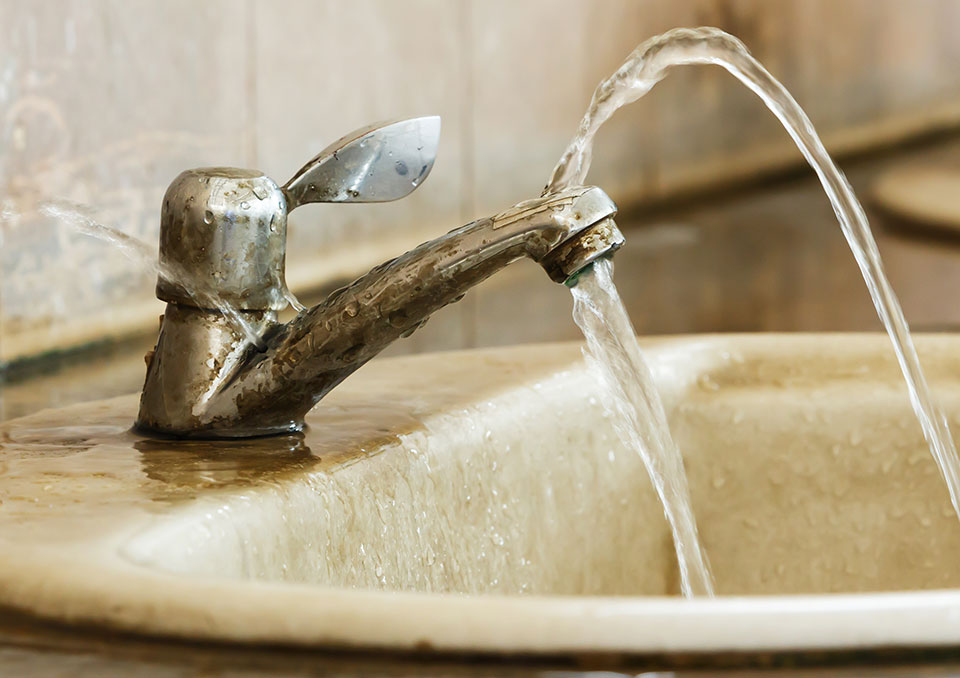Which It's Important to Rectify a Faulty Faucet
Which It's Important to Rectify a Faulty Faucet
Blog Article
The content further down pertaining to Should I Repair or Replace a Leaky Faucet? is relatively compelling. You should take a look.

Trickling faucets may feel like a minor trouble, yet their impact exceeds just the inconvenience of the noise. From drainage to sustaining unnecessary financial expenses and health and wellness threats, overlooking a dripping faucet can result in various consequences. In this article, we'll delve into why it's essential to address this usual family issue promptly and successfully.
Waste of Water
Environmental Influence
Leaking taps add considerably to water wastage. According to the Epa (EPA), a solitary faucet trickling at one drip per secondly can squander greater than 3,000 gallons of water annually. This not just stress water sources but likewise influences ecological communities and wildlife depending on them.
Step-by-Step Guide to Taking Care Of a Dripping Tap
Tools Required
Before trying to fix a leaking tap, collect the required devices, consisting of an adjustable wrench, screwdrivers, substitute parts (such as washing machines or cartridges), and plumber's tape.
Typical Tap Issues and Their Solutions
Identify the kind of faucet and the details issue creating the drip. Common issues consist of damaged washing machines, corroded valve seats, or malfunctioning O-rings. Describe supplier instructions or online tutorials for step-by-step assistance on repair services.
Financial Prices
Raised Water Costs
Past the ecological influence, trickling taps can blow up water costs considerably. The gathered wastefulness gradually translates right into greater utility expenses, which can have been stayed clear of with prompt repair work.
Potential Home Damage
In addition, extended dripping can cause damage to components and surfaces bordering the faucet. Water buildup can cause discoloration, corrosion, and even architectural concerns if left ignored, causing additional repair service costs.
Health and wellness Problems
Mold and Mold Development
The constant existence of dampness from a leaking tap develops a perfect atmosphere for mold and mildew and mold development. These fungis not just compromise indoor air quality however likewise present wellness threats, specifically for people with breathing conditions or allergies.
Waterborne Diseases
Stagnant water in dripping taps can come to be a breeding place for microorganisms and various other microorganisms, boosting the risk of waterborne diseases. Contaminants such as Legionella microorganisms prosper in stationary water, potentially leading to serious ailments when consumed or inhaled.
Do it yourself vs. Expert Repair work
Pros and Cons of Do It Yourself Repair Service
While some may try to fix a trickling faucet themselves, do it yourself repair work feature their own collection of challenges. Without correct knowledge and devices, do it yourself attempts can aggravate the issue or cause insufficient repair work, lengthening the problem.
Benefits of Hiring a Specialist Plumber
Employing an expert plumber makes certain that the underlying cause of the trickling tap is attended to efficiently. Plumbing technicians have the experience and devices to diagnose and fix faucet concerns effectively, saving time and lessening the danger of additional damages.
Environmental Obligation
Private Contribution to Conservation
Taking responsibility for fixing leaking faucets aligns with broader initiatives towards water conservation and environmental sustainability. Every person's activities collectively make a significant impact on maintaining valuable resources.
Lasting Living Practices
By prioritizing prompt fixings and embracing water-saving habits, individuals add to sustainable living techniques that profit both existing and future generations.
Safety nets
Regular Maintenance Tips
To stop leaking taps, carry out regular maintenance such as cleaning up aerators, inspecting for leakages, and changing worn-out components quickly. In addition, consider setting up water-saving tools or updating to much more reliable fixtures.
Importance of Prompt Services
Resolving trickling faucets as soon as they're discovered stops more water waste and prospective damages, inevitably conserving both water and cash in the long run.
Effect On Property Worth
Assumption of Well-Maintained Property
Maintaining a home in good condition, including addressing upkeep concerns like leaking faucets, boosts its regarded worth and charm among potential customers or occupants.
Influence on Resale Worth
Qualities with well-kept plumbing fixtures, consisting of faucets, command greater resale values in the property market. Dealing with trickling taps can contribute to a positive impact throughout home inspections and settlements.
Verdict
Dealing with a trickling faucet exceeds plain comfort; it's a vital action toward saving water, lowering financial expenses, and guarding health and building. Whether through DIY repair work or expert support, doing something about it to deal with trickling taps is a tiny yet impactful way to promote liable stewardship of sources and add to a much healthier, extra lasting future.
How to Fix a Leaky Faucet: Step-by-Step Repair Guide
A leaky faucet may seem like a simple annoyance, but if it's not fixed promptly, that leak could cost hundreds to potentially thousands. From water damage to mold, mildew, and high water bills, even a tiny leak can be catastrophic if left unattended. Damage like this can even affect the overall value of your home, so it's important to take the right approach for leaky faucet repair. You may need the help of a plumber in some cases, but we've got a few tips you can try on how to fix a leaky faucet before calling the pros.
Four Faucet Types
When you're learning how to fix a leaky faucet, the first step is knowing what kind of faucet you're working with! There are four common types.
Cartridge Faucets
Cartridge faucets come in one- or two-handled varieties. In one-handled cartridge faucets, hot and cold water combines in a single cartridge. In the two-handled versions, hot and cold water are controlled separately and mixed in the faucet.
Ball Faucets
Ball faucets have a single lever you push up and down to adjust the pressure and rotate to change the temperature. A slotted metal ball controls the amount of water allowed into the spout.
Compression Washer Faucets
They're the oldest type of faucet, but they're still used in many homes — especially older ones. Compression faucets have two separate handles that, when turned, raise or lower the washer that seals a water valve. This valve stops water from flowing through the faucet when it is turned off.
Disc Faucets
Disc faucets rarely need to be repaired due to their maintenance-free design. The water flow is controlled by two discs — the upper one raises and lowers against a fixed lower disc, creating a watertight seal. If your disc faucet starts leaking, you may need to replace the seals or clean residue buildup from the inlets.
Fixing a Leaky Faucet
Step 1: Turn Off the Water
Whether you're learning how to fix a leaky bathtub faucet or how to fix a leaky kitchen faucet, always turn off the water supply to your working area when you're fixing a leak. The last thing you want is a flood added to your list of things to fix.
Look for the shutoff valves below your sink or around the tub and turn them clockwise to stop the water flow. If your faucet doesn't have shutoff valves, you may need to turn off the water for the whole house. Check to make sure it's off by turning the faucet on. If nothing comes out, you're ready to start the repair.
Step 2: Take Apart the Faucet
How you disassemble your faucet depends on the type of fixture you have. You can use a flathead screwdriver to remove the caps on top of the handle or handles for cartridge and compression faucets. Inside, you should see handle screws. Unscrew these with a screwdriver to remove the handle.
Disc- and ball-style faucets will typically have an inlet screw near the handle, and removing that will reveal the interior of the faucet.
Detach the Valve Stem
For cartridge- and compression-style faucets, you'll see the inner valve stem or cartridge once you remove the faucet handles. If you have a compression faucet, unscrew the brass valve stem. If you have a cartridge faucet, pull out the cartridge. If your cartridge has been in place for a while, it may require some tools or extra force to remove it due to mineral deposits.
Examine and Replace Parts
Once you've removed the parts, check them out to confirm what needs to be replaced. You may see corroded rubber washers, O-rings, stems, or cartridges. On a ball-style faucet, check the seats and springs for damage.
If you need to repair a leaky disc faucet, check the inlet and seals on the lower disc.
Once you determine what parts must be replaced, visit your local hardware store. Bring the damaged parts with you to ensure you can purchase the correct components to replace them.
Clean Valves and Faucet Cavity
If you've removed a stem or cartridge, you may notice mineral buildup in the faucet's threads. Use white vinegar to clean the valve seat by soaking it for a few minutes, then scrub it away with a soft toothbrush and rinse with warm water. You can also clean the interior of the faucet in the same way.
Reassemble the Faucet
Once your faucet is cleaned and the required parts have been replaced, it's time to reassemble it. Put the pieces back together and slowly turn the water supply back on. Doing this slowly is crucial because too much initial water pressure can damage the new hardware you've just installed.
https://homewarranty.firstam.com/blog/how-to-fix-leaky-faucet

I came across that blog post about Should I Repair or Replace a Leaky Faucet? when doing a lookup on the search engines. Sharing is nice. You just don't know, you might be helping someone out. Thanks a lot for going through it.
Report this page